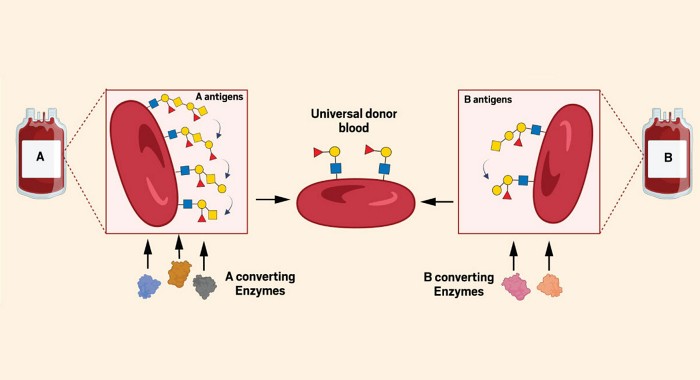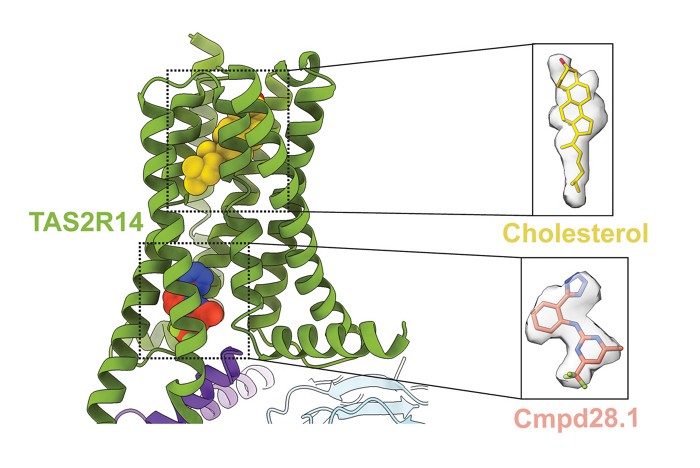Advertisement
Grab your lab coat. Let's get started
Welcome!
Welcome!
Create an account below to get 6 C&EN articles per month, receive newsletters and more - all free.
It seems this is your first time logging in online. Please enter the following information to continue.
As an ACS member you automatically get access to this site. All we need is few more details to create your reading experience.
Not you? Sign in with a different account.
Not you? Sign in with a different account.
ERROR 1
ERROR 1
ERROR 2
ERROR 2
ERROR 2
ERROR 2
ERROR 2
Password and Confirm password must match.
If you have an ACS member number, please enter it here so we can link this account to your membership. (optional)
ERROR 2
ACS values your privacy. By submitting your information, you are gaining access to C&EN and subscribing to our weekly newsletter. We use the information you provide to make your reading experience better, and we will never sell your data to third party members.
Biochemistry
Lysine-free tags avoid false positives in protein degrader assays
But conclusive proof of this problem is missing
by Victoria Atkinson, special to C&EN
July 31, 2024

Targeted protein degradation (TPD) is a promising alternative to conventional small-molecule drugs. Rather than inhibiting a single enzyme’s function, degrader molecules label selected disease-associated proteins for degradation by the cell’s own internal machinery, eliminating these problematic biomolecules in full. Assays to develop effective TPD therapies track the quantity of targeted proteins using luminescent tags, and the intensity of the luminescence signal indicates the extent of degradation. But some worry that the standard tags, which include the amino acid lysine, are not just innocent bystanders in this degradation pathway.
“When you label a protein, you’re actually perturbing the system, and the tag itself might trigger some artifacts,” explains Jin Wang, a chemical biologist at Baylor College of Medicine. To tackle this possible problem, Wang’s team has developed lysine-free luciferase tags (ACS Med. Chem. Lett., 2024, DOI: 10.1021/acsmedchemlett.4c00271), which he says eliminate the risk of false positives from tag-induced degradation.
Luciferase tags contain two parts: a small fragment that is incorporated into the target protein during preparation and a larger, complementary fragment that is added to the assay later. Upon binding, these two fragments form an activated complex that undergoes a bioluminescent catalytic reaction, thus providing an immediate indication of the quantity of target protein present. The more protein is successfully degraded, the weaker the luminescence signal.
Industry standard tags contain lysine residues on both tag fragments, but lysine residues could themselves be implicated in the degradation pathway. “When we have a highly exposed lysine on the protein surface, it can easily accept ubiquitin”—the molecular label used by cells to trigger protein degradation, says Hanfeng Lin, the study’s first author. “That would create artificial change estimations.”
Researchers across the field are aware of this hypothetical problem but as yet, no studies have conclusively demonstrated that lysine-containing tags impact the accuracy of current assays. Anecdotal accounts of false positives caused by the presence of this amino acid residue inspired the team to seek a solution, however. “Artificial degradation is always a concern for people in the TPD field,” Wang says. “That’s why we did this research.”
The group replaced the possibly problematic lysine residues with charge-equivalent arginine, maintaining the binding and luminescence properties of the original tags. They then compared the two directly, performing degradation studies on a panel of known TPD therapies and revealing surprising discrepancies between the readouts from the two tags. Wang says these differences highlight the prevalence of false positives in standard luciferase assays, but not everyone is convinced by these results.
“The authors show that you can substitute these lysine residues with arginine and it still works—that’s promising. But I don’t see any clear evidence that [tag-induced degradation] is a problem at the moment,” says Nico Dantuma, a cell biologist at the Karolinska Institute.
University of Minnesota chemical biologist John Hulleman agrees. “Conceptually, their work makes sense, but the authors provide no data that convincingly support the idea [of tag-induced degradation],” he says. “I think that these tools may be adopted by some just because it makes logical sense, but I don’t think that these results are going to be adopted across the TPD landscape.”
Wang concedes that the full influence of the lysine-containing tags has not been proved conclusively at this point. “What we can say here is only that we can remove the potential possibility for lysine as a ubiquitin accepter,” he says. “For people in the TPD field, switching to the [lysine-free] tag will give them peace of mind.”




Join the conversation
Contact the reporter
Submit a Letter to the Editor for publication
Engage with us on Twitter